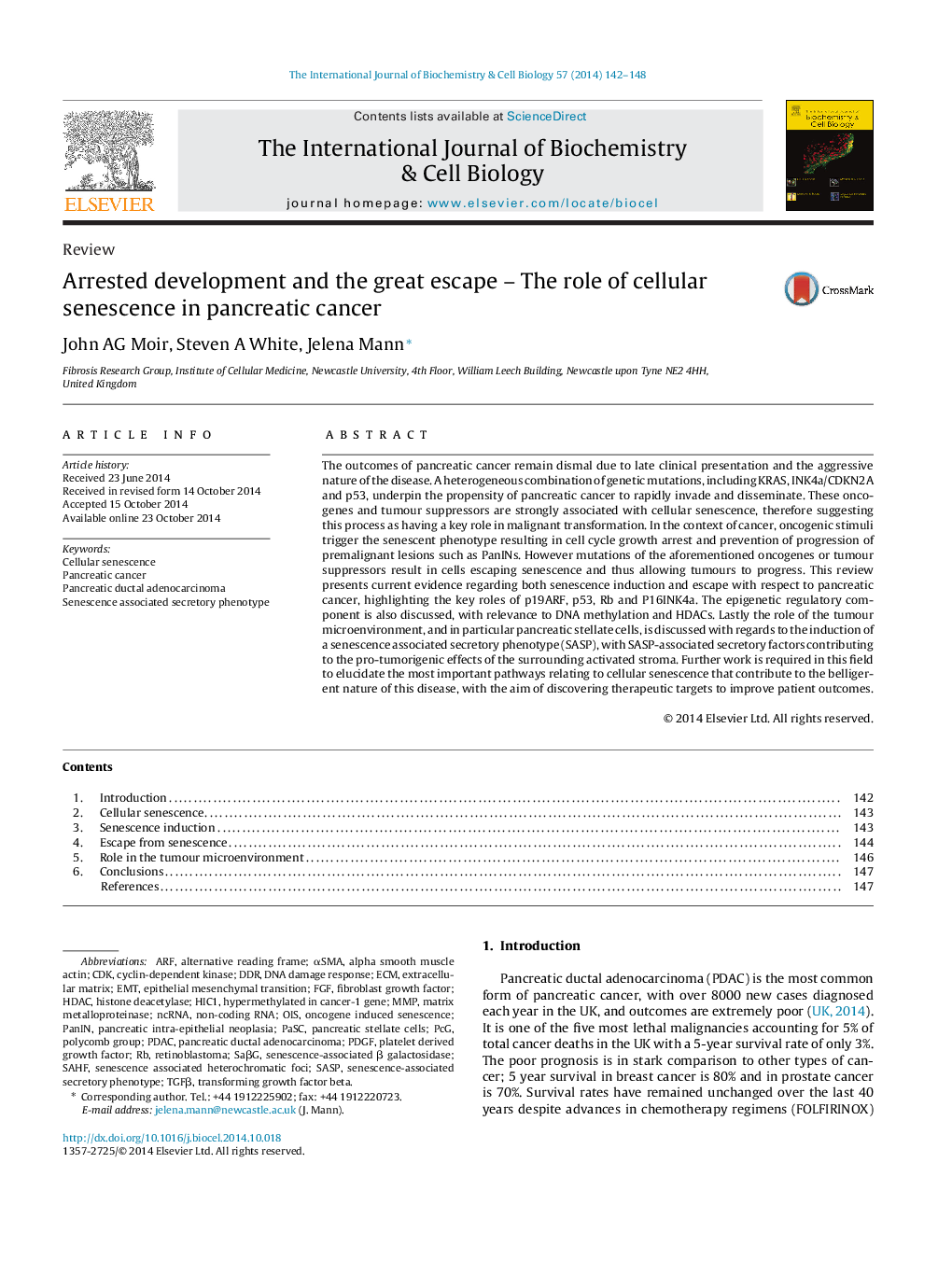| Article ID | Journal | Published Year | Pages | File Type |
|---|---|---|---|---|
| 8322877 | The International Journal of Biochemistry & Cell Biology | 2014 | 7 Pages |
Abstract
The outcomes of pancreatic cancer remain dismal due to late clinical presentation and the aggressive nature of the disease. A heterogeneous combination of genetic mutations, including KRAS, INK4a/CDKN2A and p53, underpin the propensity of pancreatic cancer to rapidly invade and disseminate. These oncogenes and tumour suppressors are strongly associated with cellular senescence, therefore suggesting this process as having a key role in malignant transformation. In the context of cancer, oncogenic stimuli trigger the senescent phenotype resulting in cell cycle growth arrest and prevention of progression of premalignant lesions such as PanINs. However mutations of the aforementioned oncogenes or tumour suppressors result in cells escaping senescence and thus allowing tumours to progress. This review presents current evidence regarding both senescence induction and escape with respect to pancreatic cancer, highlighting the key roles of p19ARF, p53, Rb and P16INK4a. The epigenetic regulatory component is also discussed, with relevance to DNA methylation and HDACs. Lastly the role of the tumour microenvironment, and in particular pancreatic stellate cells, is discussed with regards to the induction of a senescence associated secretory phenotype (SASP), with SASP-associated secretory factors contributing to the pro-tumorigenic effects of the surrounding activated stroma. Further work is required in this field to elucidate the most important pathways relating to cellular senescence that contribute to the belligerent nature of this disease, with the aim of discovering therapeutic targets to improve patient outcomes.
Keywords
ECMARFPDGFSAHFPcGαSMAncRNAHDACFGFTGFβDDRSASPPASCMMPOISCDKNon-coding RNAPancreatic ductal adenocarcinomaPDAC یا pancreatic ductal adenocarcinomaalpha smooth muscle actinepithelial mesenchymal transitionHIC1Transforming Growth Factor BetaEMTretinoblastomaPancreatic cancerPancreatic Stellate Cellsplatelet derived growth factorfibroblast growth factorSenescence-associated secretory phenotypeSenescence associated secretory phenotypeAlternative reading frameExtracellular matrixmatrix metalloproteinasehistone deacetylaseDNA damage responsePanINCellular senescencecyclin-dependent kinasepolycomb group
Related Topics
Life Sciences
Biochemistry, Genetics and Molecular Biology
Biochemistry
Authors
John AG Moir, Steven A White, Jelena Mann,
